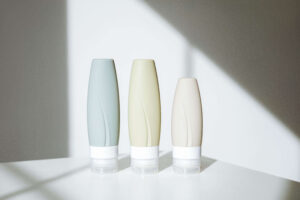Empowering Consumers

In recent years, the clean beauty movement has gained significant momentum as consumers become more conscious of the ingredients in their skincare and makeup products. However, as the demand for clean beauty products rises, so does the risk of greenwashing. Greenwashing occurs when companies use deceptive marketing tactics to portray their products as more environmentally friendly or natural than they actually are. In the world of clean beauty, where transparency and authenticity are paramount, it’s essential for consumers to know how to spot greenwashing. In this blog post, we’ll explore what greenwashing looks like in the clean beauty industry and provide tips on how to navigate through it.
Before diving into how to spot greenwashing, it’s crucial to understand what it entails. Greenwashing can take various forms, but its primary goal is to mislead consumers into believing that a product is cleaner or more sustainable than it truly is. This can include using misleading labels, vague terminology, or highlighting a few natural ingredients while ignoring the rest.
1. Look Beyond Buzzwords
One of the most common tactics used in greenwashing is the strategic use of buzzwords such as “natural,” “organic,” or “eco-friendly.” While these terms may sound appealing, they are often unregulated and can be used to mislead consumers. Instead of relying solely on these buzzwords, take a closer look at the ingredients list and certifications, if any, to determine the product’s true sustainability.
2. Check the Ingredients List
When it comes to clean beauty, the ingredients list is your best friend. A truly clean beauty product should prioritize natural and non-toxic ingredients while avoiding harmful chemicals such as parabens, sulfates, and phthalates. However, some companies may include a few natural ingredients in their products while still incorporating synthetic or potentially harmful substances. Be sure to read the entire ingredients list and research any unfamiliar ingredients to ensure they align with your clean beauty standards.
3. Research the Brand’s Values and Practices
In addition to scrutinizing the product itself, it’s essential to research the brand behind it. Look for information about their sourcing practices, manufacturing processes, and overall commitment to sustainability. Transparent brands will openly share this information on their website or product packaging, allowing consumers to make informed decisions. If a brand’s claims seem too good to be true or are not backed up by evidence, proceed with caution.
4. Look for Third-Party Certifications
Third-party certifications can provide additional assurance that a product meets certain standards of cleanliness and sustainability. Look for certifications from reputable organizations such as the Environmental Working Group (EWG), COSMOS, or the USDA Organic seal. These certifications require rigorous testing and verification processes, making them a reliable indicator of a product’s integrity.
5. Beware of Greenwashing by Association
Sometimes, companies may attempt to capitalize on the clean reputation of certain ingredients or trends without actually adhering to clean beauty principles. For example, a product may prominently feature a single natural ingredient or incorporate trendy buzzwords like “vegan” or “cruelty-free” to appeal to consumers’ preferences. While these attributes can be positive, they do not necessarily guarantee that the product as a whole is clean or sustainable. Always look at the bigger picture and consider the product’s overall composition and brand reputation.
6. Trust Your Instincts
Ultimately, trust your instincts when evaluating a product for greenwashing. If something feels off or too good to be true, it’s worth investigating further. Pay attention to red flags such as overly vague marketing claims, lack of transparency, or a history of misleading practices. By staying informed and vigilant, you can avoid falling victim to greenwashing and make choices that align with your values and priorities.

In the world of clean beauty, greenwashing poses a significant challenge for consumers seeking genuinely sustainable and non-toxic products. However, by learning how to spot greenwashing tactics and conducting thorough research, you can make informed decisions and support brands that prioritize transparency and authenticity. Remember to look beyond buzzwords, check the ingredients list, research the brand’s values, look for third-party certifications, beware of greenwashing by association, and trust your instincts. With these strategies in mind, you can navigate the clean beauty landscape with confidence and integrity.

